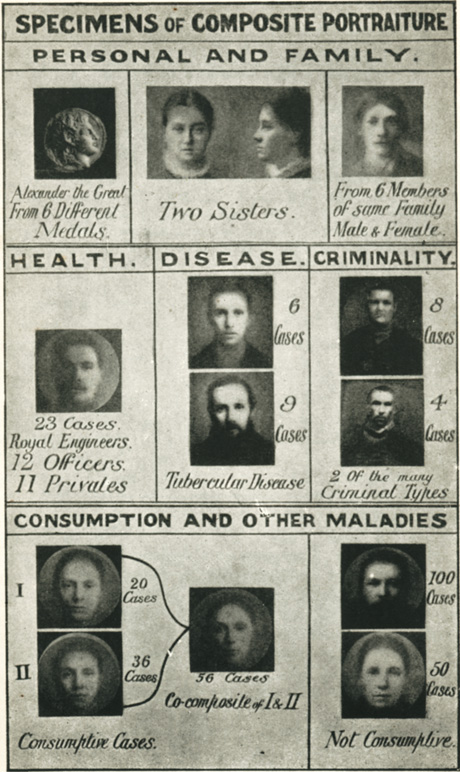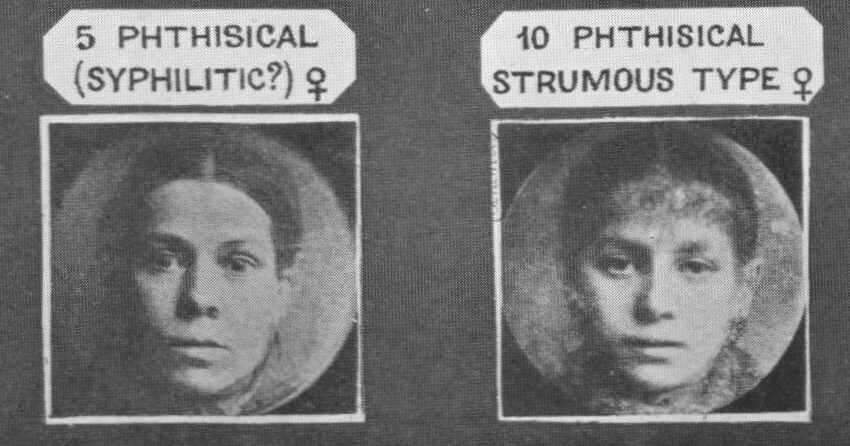The history of compositing multiple photographs of different people starts with Sir Francis Galton in 1878. Many of Galton’s publications describe his process (pdf 969 KB) to create high multiple exposures in the 1870’s, even a 1906 newspaper advertisement (pdf 279 KB) politely asking the public to send him family photographs.
Galton’s description “…averaging could improve on appearance by cancelling out peculiarities and defects.” is partially true in the “cancelling out…” phrase but the supposition “improve” fundamentally disagrees with “the average”. Also, his conclusions were ambiguous on “the average” determining eugenic traits of:




A eulogy for Dr. Oliver Sacks included his 100 recommended books, in the top ten Dr. Sacks listed Sir Francis Galton’s “Inquiries into Human Faculty and its Development” (html) or pdf (4.5Mb).
Others that have attempted high multiples compositing:
Shinichi Maruyama produces high multiple composites of dancers in motion, very different than everybody else, quite unique and beautiful.
Ken Kitano produces exquisite high multiples portraits.
Jason Salavon This work involves mathematical pixel averaging of linked subject models: wedding portraits, Playboy models, old master painters’ self portraits.
It is surprising only four artists (including me) have done similar process, but so different results, in the history of photographic art, exploring aesthetic identity, developing our own descriptive nomenclature:
High Multiples (Donald Bray 2010)
Our Face (Ken Kitano 2008)
Amalgamation (Jason Salavon, 1997)
Photosynthesis (Krzysztof Pruszkowski 1975)
Portrait and face composites
These are depressingly common and repetitive, included here as part of my historical and contemporary research into specifically high multiples compositing. None of these represent an artistic practice especially not including the composite in the chaotic built environment:
Newspaper articles on average features.
Addiction research, this is an exact replication of Sir Francis Galton’s Composite Portraiture of 1878.
FaceResearch.org and/or Face Research Lab at the University of Glasgow Institute of Neuroscience and Psychology
The Postnational Monitor showing a lot of high multiples composites of various nationalities as well as Hollywood stars.
Face of the Future Home An Outreach programme from the Computer Science Dept. at Aberystwyth University.
Richard Prince Composite Portrait of 57 Girlfriends Seen on Seinfeld.
Bill Lytton writing on The Marquardt mask and the golden ratio as applied to high multiples face composites. This is an interesting, short, but very well written article.
BBC News on the ‘Face of Peterborough‘ and Face values applied to love game
Pat David and Proof of concept of what? seems to be doing some pixel processing to composite an average.
Face Cloud by Robert Woodley and Adelheid Mers.
AverageExplorer: Interactive Exploration and Alignment of Visual Data Collections software code for real time photo analysis of high multiples composites, quite interesting, also features internet cats.
Architecture
There is also a forgettable practice, unfortunately extremely common, of composite architecture photography. From global tourist icons (Eiffel tower, Big Ben, etc.) to unidentifiable streetscapes and buildings, for sure some of them are colourful and chaotic, but so are sunsets and flowers. Why forgettable? People are infinitely interesting, their absence is a fundamental limit to visual storytelling.